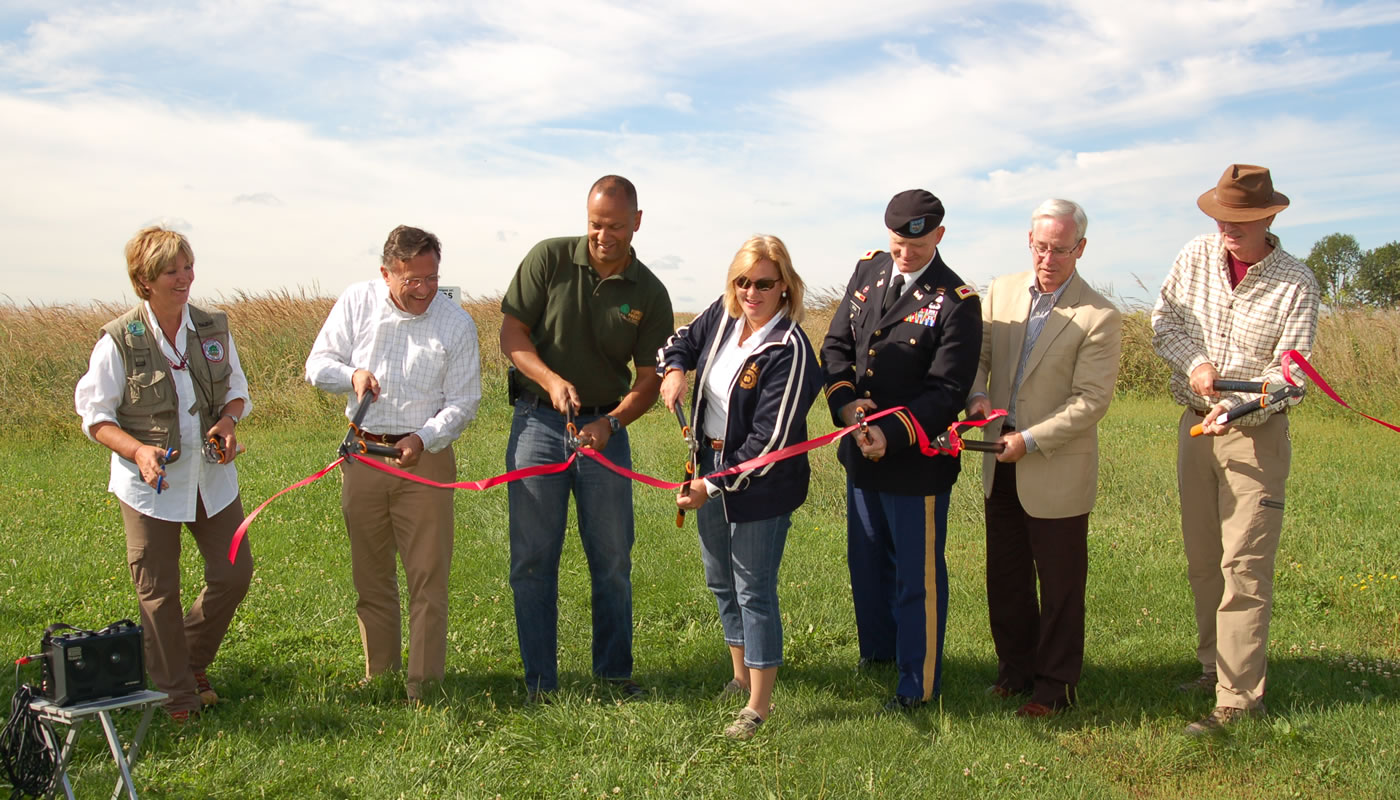On September 6, 2014, Orland Grassland celebrated a major milestone, the completion of a massive five-year restoration project by the US Army Corps of Engineers. Over the course of the $7.7 million project, the Corps removed more than 400 acres of invasive trees and shrubs across the 960-acre preserve, seeded hundreds of acres with native plant seed and planted more than 50,000 native plants. It removed or disabled 12.5 miles of drain tiles, allowing water to return to the site to create life-sustaining wetlands.
The result of all this work is a sweeping, hilly grassland interspersed with low, wet areas. The preserve is already supporting increasing numbers of nesting grassland and wetland birds, not to mention a host of other important plant and wildlife species. The project is among the largest prairie restorations in Cook County.
But the ribbon cutting—a gathering that attracted volunteers, leaders and neighbors as part of the Orland Grassland Volunteers’ Summer’s End Celebration—was about more than just the Army Corps’ mighty push.
The event recognized the contributions over the years of other critical partners such as Audubon–Chicago Region and Orland Grassland Volunteers, who for years have kept a spotlight on the site and set the stage for its renewal. These groups cultivated a community culture around the preserve and organized countless regular workdays to remove invasive species from areas in greatest need.
The event recognized partners such as Openlands, who contributed technical expertise and logistical support during critical stages of work; Friends of the Forest Preserves, who worked early on to restore a portion of the preserve near Marley Creek; and the Village of Orland Park, which has continued to support the grassland in various ways, including by adding a mural of the grassland in its library. The event celebrated individuals such as former US Representative Judy Biggert, who secured federal funding at a critical stage. And it celebrated the Forest Preserves, the grassland’s landowner, for its major ongoing commitment to the site in staff, funding, planning and oversight.
The Army Corps began its work in early 2009. Using heavy machinery, the Corps removed large areas of trees and brush, some invasive and some planted decades ago in an attempt to reforest the site (then considered a standard conservation measure).
With the completion of the Army Corps’ contract, restoration work at Orland will again fall primarily to the Forest Preserves of Cook County and volunteers. With so much heavy lifting done, staff and volunteers alike are looking forward to the site’s next chapter, one defined primarily by follow-up and maintenance, including further seed distribution, continued control of invasive species, prescribed burns and wildlife monitoring.
And once Orland Grassland’s new five-mile loop trail is completed later this fall, many more people will get to know its rolling majesty. At least a few, we hope, will be inspired to add their own contribution to this collective legacy of stewardship.

